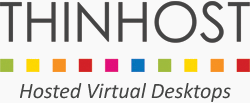Archive
Get articles straight away by subscribing to our RSS feed. You can do this via most popular e-mail clients, or try Google Reader.
Posted at Oct 22, 2010
Because Businesses want to buy SaaS
The SaaS industry is expected to grow to $114 billion in 2010 expanding at a rate of 25% per annum (with SMB's making up 50% of this total) according to Goldman Sachs and IDC. In the UK 68% of businesses currently use SaaS for business applications according to a European survey by Gartnerin 2009.
So why is SaaS so compelling for businesses today? The answer is that it's a combination of the following factors:
Recurring revenue is the number 1 driver of business valuation in a software company sale
Recurring revenue is consistently the number one driver in software company valuations. According to Dave Kauppi, President of MidMarket Capital.
"Your key short-term strategy in maximizing your company's value in the marketplace is to increase the level of contractually recurring revenue. As an acquiring company looks at you as a potential acquisition target they place a value of, for example, 1 times on projected new sales supported by historical performance. They will place a value of 2 times on the revenue that is covered by contracts they acquire with the purchase of your information technology company.
On a value scale, contractually recurring revenue is a 10, expected historical revenue is a 6 and a sales pipeline is a 3. Move your 3's and 6's to 10's and recognize a big boost in your business selling price. Go on a contractually recurring revenue hunt before you sell your information technology company."
Reach new or "non" customers
Having a SaaS offering means you can attract new types of customers. Reaching these noncustomers is described in the international bestselling book, Blue Ocean Strategy by W. Chan Kim and Renee Mauborgne.
"... companies need to take a reverse course. Instead of concentrating on customers, they need to look to noncustomers. And instead of focusing on customer differences, they need to build on powerful commonalities in what buyers value. That allows companies to reach beyond existing demand to unlock a new mass of customers that did not exist before."
One example of a noncustomer for a software publisher might be a company too small to leverage the appropriate IT infrastructure to house a multi-user software application. Not only is it too technically complex, but also the cost of selling into such a company is prohibitive. In a SaaS context however the application can be delivered over the Internet via a web browser or Citrix client (for Windows apps) thus eliminating the technical barriers, and the software application can be bought directly from the software publishers web store or a SaaS reseller, thus eliminating the cost of sale barrier. The result is that the small business gets the technology it needs to thrive and compete in its marketplace, and software publisher makes an automated sale with recurring revenue.
SaaS means channels
Having a SaaS offering opens you up to a vast network of resellers and affiliates who hold the trusted advisor role with their customers. These trusted advisors might be IT resellers, accountants, or consultants who hold an advisory role within a sector or industry. Because SaaS products are simple to implement, available online, and come with automated billing and e-commerce it's easy for such resellers and affiliates to add SaaS products into their portfolio. As the software publisher, you can either invest in training your resellers to sell and even support your product(s), or if that's not appropriate they can simply generate the leads for you and take pre-agreed sales commissions on the deals that close.
Lincoln Murphy at Sixteen Ventures writes "many people seem to think: 'if it's on the Web then the Web is the channel.' This is a very narrow-minded view that can significantly stagnate, if not completely stall, growth. There are industries and market segments where the people making the purchasing decisions do not spend their time searching the Web for the best solution. In these cases they turn to trusted advisors for recommendations."
Automation: make money while you sleep
Automated trials, online signup, automatic payment collection, automated provisioning, automated customer support and reseller integration makes for a totally new kind of business model. The more of the process you automate, the lower your cost of delivery will be.
You can take the automation process step by step, implementing the most important pieces first. To start with you may just want to host your software and set your pricing. You can then at a later stage decide to take payments automatically, or to write a script to automate the setup process of your software once an order is received through your web store.
Scale effortlessly, reduce overheads, and sell anywhere
Implementing your SaaS product(s) for customers requires no onsite setup or engineering or interaction with the IT system, meaning you can sell anywhere - nationally or internationally. You can sell online and through resellers, and manage all customer implementations centrally from your server farm in the cloud. As your SaaS customer base grows you simply increase the capacity of your server farm to accommodate that growth. Increasing capacity is effortless, can be done at the touch of a button, and is paid for monthly on a pay-as-you-go basis.
